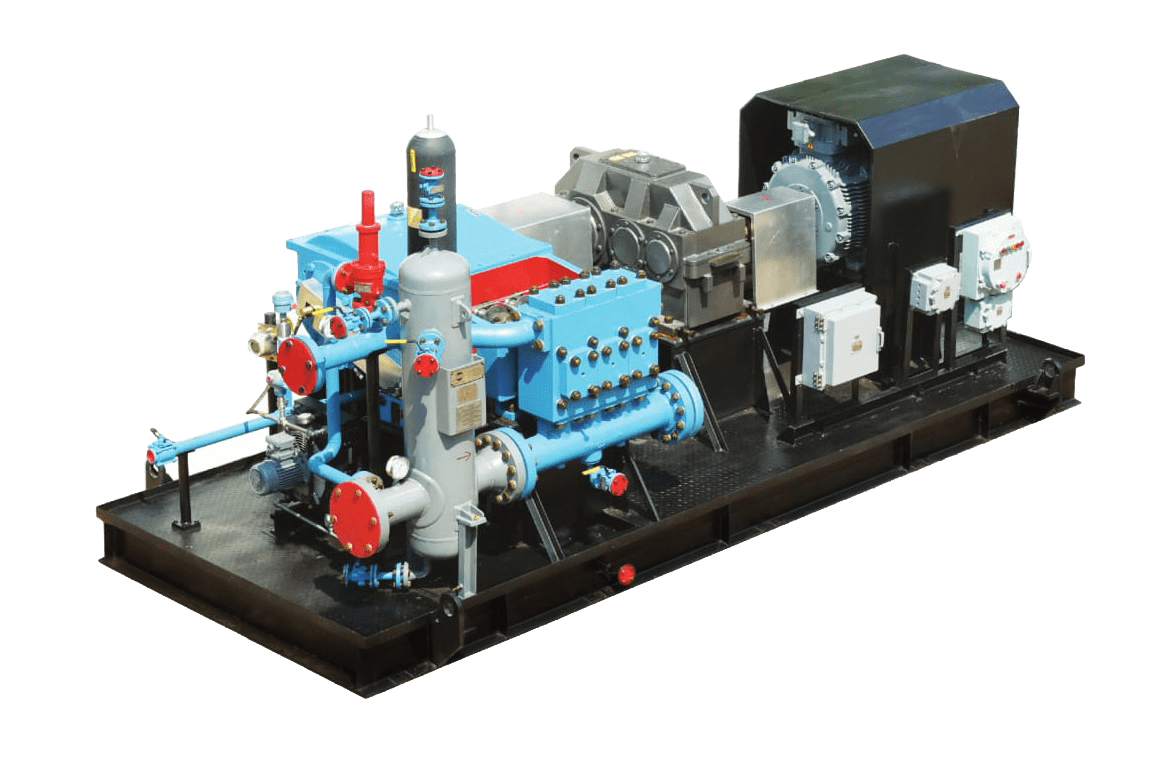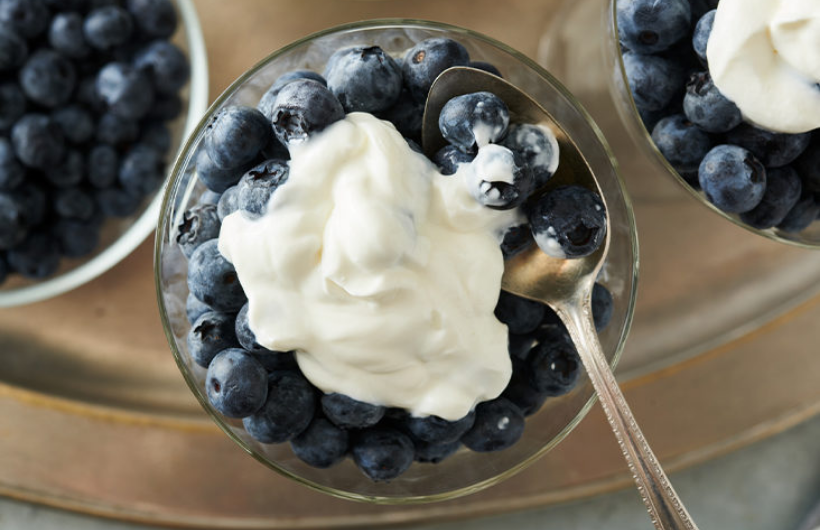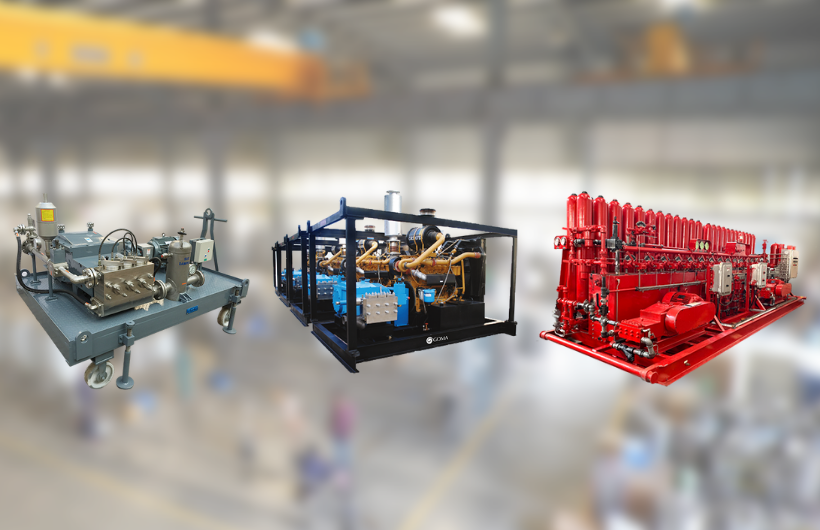07 November 2022
Reciprocating Pumps by GOMA

Reciprocating pumps are from a family of positive-displacement pumps. Reciprocating pumps operate on the principle of displacing the liquid by plungers which move in reciprocating action inside its fluid end which has a set of suction and discharges non-return valves. The pump has a power end where the rotary action is converted into reciprocating action.
The reciprocating pumps are used in applications where a higher head is required. Most of the applications have fixed volumes with variable discharge heads however some types of pumps are designed to have variable flow rates as well. These pumps are mainly divided into two categories i.e. direct driven or power-driven. The direct driven pumps are driven by gas pressure whereas power-driven pumps are driven by external power motors (electric or gas). We at Goma mainly deal with power-driven pumps.
Types of reciprocating pumps;
Reciprocating Pumps are divided mainly into three types.
- Plunger-type reciprocating pump.
- Piston-type reciprocating pump.
- Diaphragm-type reciprocating pump.
The working principle of the reciprocating pump is the same as the IC engine. Only the difference is combustion does not take place in a reciprocating pump. In a reciprocating pump plunger or piston travels back & forth in the cylinder called the chamber. Suction stroke or back stroke creates a vacuum in the cylinder and helps intake of liquid & discharge stroke or forward stroke compresses the liquid in the cylinder & then discharges to the application point. Non-return valves are placed in suction & discharge ports to ensure that flow is flowing in one direction. In a reciprocating pump, flow is pulsating. The more the number of plungers/pistons in a pump, the smoother the flow. To reduce the pulsations in the discharge line there are dampeners at each suction & discharge. These are designed to minimize the pulsations in the flow of liquid. Depending on the duty cycle, application and liquid to be pumped various combinations of material of construction, especially for the fluid end can be selected.
Major Components of reciprocating pump
a) Power End: Consists of a Crankcase which also acts as an oil sump for various parts that it houses like a crankshaft, connecting rod, bearings, crosshead, etc. The power source gives rotary motion to the crank. Connecting rod translates this rotary motion to reciprocating motion and transfers power to the crosshead.
b) Stuffing box assembly: The crosshead transmits this power to plungers/pistons which are housed in the stuffing box/liners having tight sealing arrangement.
c) Fluid End: Also known as a chamber that comes in contact with the liquid houses suction and delivery valves at the suction end and delivery end respectively. These valves are non-return values helping the liquid to flow from suction to discharge in one direction only.
d) Suction and Delivery Manifold: These are pathways of the liquid to the suction side and discharge side of the chamber respectively designed appropriately to the flow and pressure ratings.
What are the advantages of a Reciprocating Pump?
- A major advantage is it gives high pressure.
- In a reciprocating pump, priming is not required.
- The reciprocating pump gives a high suction lift.
How does Reciprocating Pumps by GOMA stand apart?..
GOMA Engineering Pvt. Ltd. are one of the leading OEM. of reciprocating pumps for more than 35 years. GOMA manufactures reciprocating pumps as per Hydraulic Institute standards and also API 674 (American Petroleum Institute). Due to the nature of the operation of the reciprocating pump, there is a lot of wear & tear in the pump as the parts are in motion to and fro almost 200 to 1000 times a minute. But with research and innovation, GOMA has come up with designs that require less frequent replacement. With a wide range of pump models catering to innumerable applications in the past 35 years, GOMA has dealt with major on-field challenges and given solutions for clients.
GOMA Engineering has been dealing in reciprocating pumps successfully with a good growth rate in the Indian market and also is making its mark on the overseas markets.
GOMA has all the necessary approvals from EIL, ONGC, PDIL, L&T, BHEL, etc, and also got pumps thoroughly tested by various TPI agencies like Lloyd’s, BVQI, DNV, TUV, SGS, CEIL, etc.

